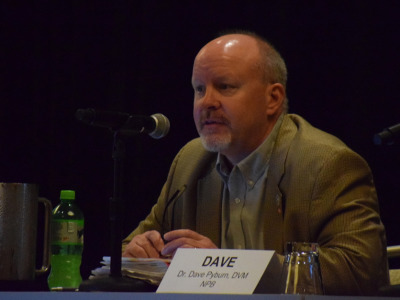There’s an old adage that the “best defense is a good offense.” No one wants to see an animal disease outbreak in the U.S., but if one hits, how can infections be contained and controlled if new diseases reach our shores?
That’s part of the thinking behind the recent launch of the National Pork Board’s AgView, a web-based software tool designed to protect the swine industry infrastructure against foreign animal diseases (FAD) and potential loss of export markets.
“AgView is a system that really monitors the biosecurity of the country. It’s a way we can potentially identify diseased pigs from one location of the country and through the chain so we can establish buffer zones and then establish areas — by exclusion — that are free of the disease,” explained North Carolina hog farmer Jan Archer during a recent webinar. “It’s very much like contact tracing that people are doing with COVID-19 now.”
Archer says the industry “learned a lot in 2013 and 2014” when the Porcine Epidemic Diarrhea virus (PEDv) attacked U.S. herds and killed over 1 million pigs.
“We learned a lot about the transporting of pigs, how to keep diseases out of areas and how to increase our biosecurity. Those were hard won, painful lessons, but that’s when we learned that we have to be proactive. That’s when the Secure Pork Supply Plan and AgView came into being.”
Widespread industry participation will be critical, however.
“We have to have a critical mass in terms of the numbers of farms that are part of the AgView system. That’s going to be our first challenge,” emphasized Archer.
With African Swine Fever outbreaks devastating pork production in China and shutting down German export markets, pork producers have plenty of reasons to be concerned about ASF crossing U.S. borders. The recent detection of ASF in Germany severely impacted the nation’s exports. When ASF was discovered in wild pigs, the German pork market lost over $1 billion in value in 24 hours when international export markets closed, noted NPB CEO Bill Even.
U.S. pork exports account for approximately 30% of the market. A single case of ASF is capable of closing trade to all foreign nations. According to a white paper from Iowa State University, such an outbreak would immediately reduce live hog prices by 40 to 50% with a potential loss of 140,000 jobs nationwide. Depending on the scenarios, industry losses could range from $15-$50 billion.
AgView is a unique system that uses both customizable data integration and analysis to provide an easy, accessible and uniform way for state veterinarians to trace animals and their movements in the event of a FAD outbreak. Producers can opt in and there is no fee.

Dave Pyburn, National Pork Board
“The first place we discover ASF won’t likely be the first place that actually was infected,” explains Dave Pyburn, senior vice president of science and technology for the National Pork Board. “It’s going to be farther down the disease transmission chain. We're going to need to work back up and down from that point to fully track disease transmission.”
By enrolling in AgView, pork producers voluntarily share their farm information with a secure, encrypted third-party database. This structure also protects participating producers from any public requests to see their data. The state veterinarian’s office and the disease incident response team are the only parties with access to the information, and then only after first obtaining permission from the farmer.
“This is really just the conduit of existing information to make it easy for the right people to do their job on behalf of you,” says Russ Nugent, NPB board member and pork producer.
Interested in more coverage and insights? Receive a free month of Agri-Pulse.
Without a comprehensive national database, he explains it would take significantly more time to trace animals by combing through individual documents in multiple places. This includes data on animals, premises, sales and movements.
AgView also makes it significantly easier for officials to negotiate export sales by proving an outbreak is confined to a particular region.
“Because a FAD would likely stop all of our trade partners, we'll need to regionalize to get some of that trade back,” says Pyburn. “That means we’d only trade from safe or free zones. AgView can help pinpoint what those zones are.”
Other sectors of the livestock industry have interest in developing their own traceability systems.
The National Cattlemen’s Beef Association (NCBA) recently submitted comments on a proposal to utilize RFID tags as the official identification for the interstate movement of cattle and bison.
“NCBA has long been supportive of traceability for animal health purposes,” the association said in an October statement, noting its belief that "the goal of any identification program should be to enable the cattle industry, state, and federal animal health officials to respond rapidly and effectively to animal health emergencies."
But traceability in the beef industry is a sensitive issue, one that often pits producers against rival organizations, the government, and even each other.
The export market is also significant to the dairy sector, making up to 15% of the industry’s economy. The National Milk Producers Federation has also long been in support of national animal traceability, says Jamie Jonker, vice president of sustainability and scientific affairs.
“An outbreak of many foreign animal diseases can have a severe impact on U.S. dairy farmers. A national level animal traceability system is essential to minimize the impacts,” he says.
Participation in AgView can serve as a model for similar traceability systems to come. To be effective, participating producers will need to keep their records up to date. The National Pork Board is working on enabling automatic synchronization from on-farm record-keeping software to AgView. The platform also accepts data imported from Excel.
“Hopefully if we tell the story correctly, enough folks understand the potential impact of the ASF outbreak,” says Nugent.
For more news, go to: www.Agri-Pulse.com.

